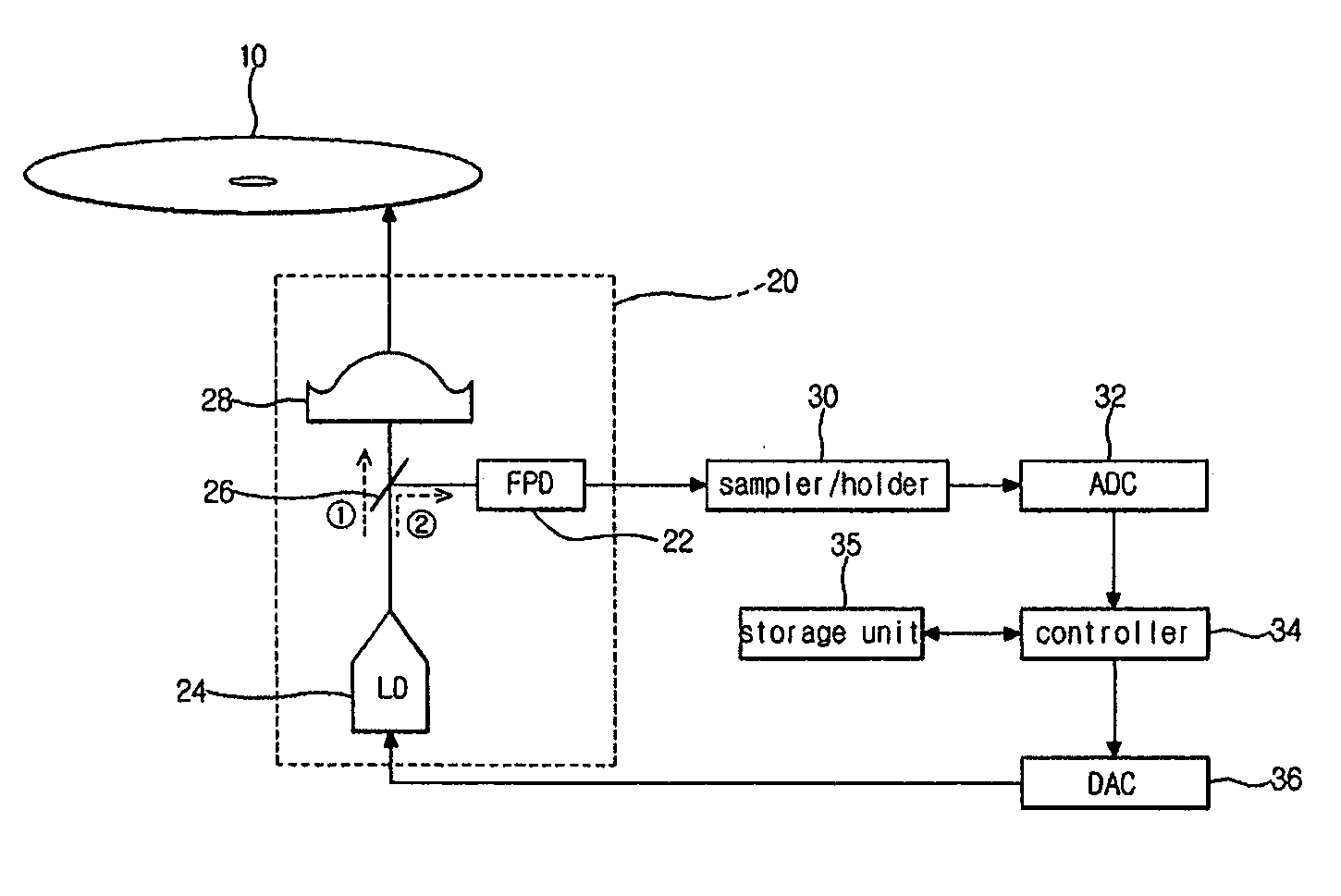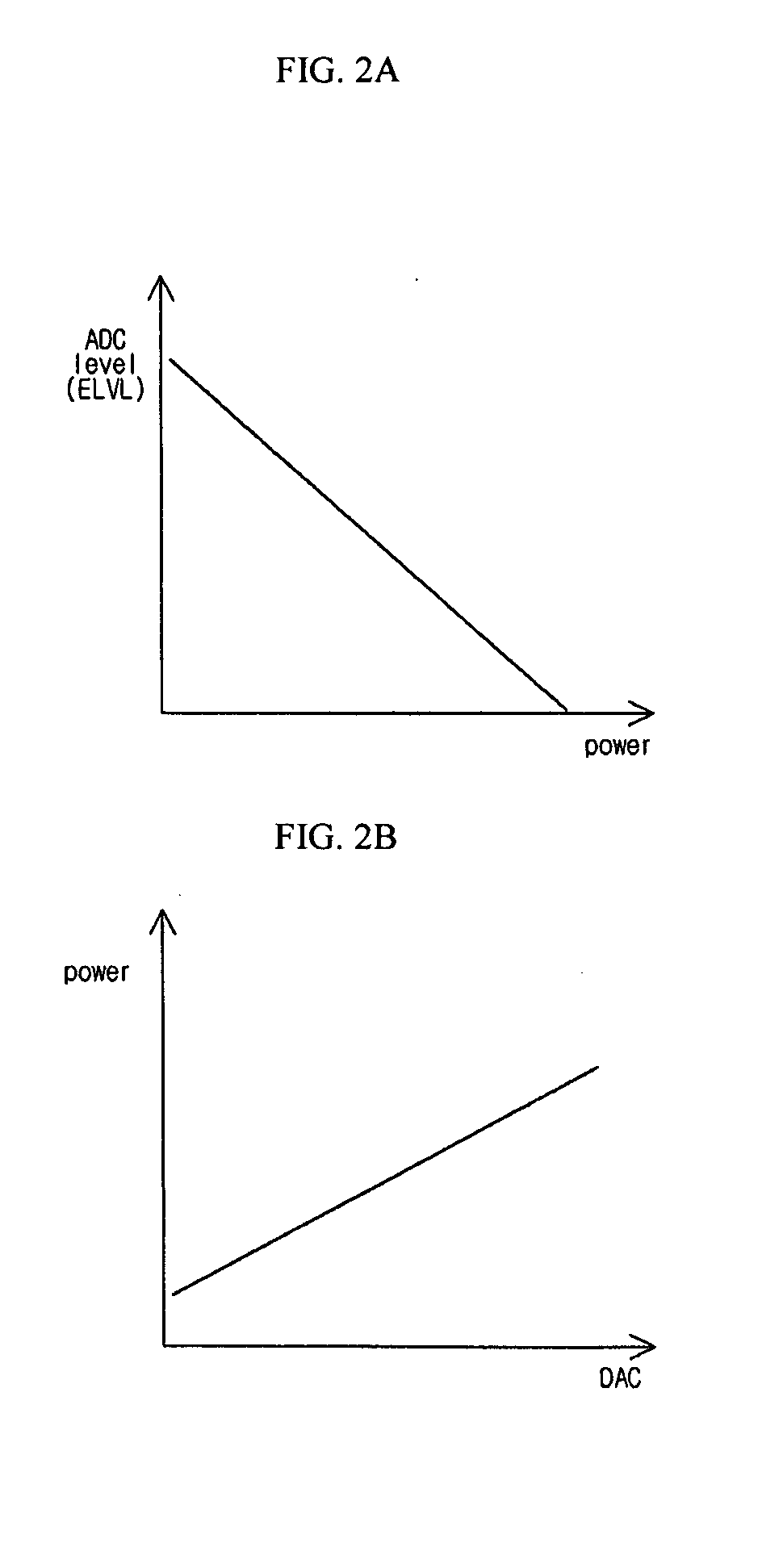Optical disc apparatus and method for performing optical power study thereof
- Summary
- Abstract
- Description
- Claims
- Application Information
AI Technical Summary
Benefits of technology
Problems solved by technology
Method used
Image
Examples
Embodiment Construction
[0033]Reference will now be made in detail to the present embodiments of the present invention, examples of which are illustrated in the accompanying drawings, wherein like reference numerals refer to the like elements throughout. The embodiments are described below to describe the present invention by referring to the figures.
[0034]FIG. 1 is a schematic block diagram of an optical disc apparatus according to an embodiment of the present invention. As shown in the drawing, the optical disc apparatus includes an optical pick-up 20 and a sampler / holder 30, an analog / digital converter (ADC) 32, a digital / analog converter (DAC) 36, a controller 34, and a storage unit 35. In this embodiment, the optical pick-up 20 includes an objective lens 28, a beam splitter 26, a laser diode (LD) 24, and a front photo diode (FPD) 22. However, the invention is not limited to this specific embodiment, and it is contemplated that the invention will work with many different configurations.
[0035]The optica...
PUM
 Login to View More
Login to View More Abstract
Description
Claims
Application Information
 Login to View More
Login to View More - R&D
- Intellectual Property
- Life Sciences
- Materials
- Tech Scout
- Unparalleled Data Quality
- Higher Quality Content
- 60% Fewer Hallucinations
Browse by: Latest US Patents, China's latest patents, Technical Efficacy Thesaurus, Application Domain, Technology Topic, Popular Technical Reports.
© 2025 PatSnap. All rights reserved.Legal|Privacy policy|Modern Slavery Act Transparency Statement|Sitemap|About US| Contact US: help@patsnap.com



